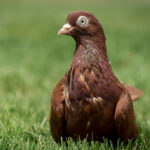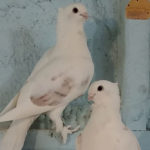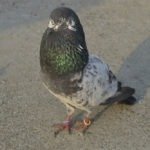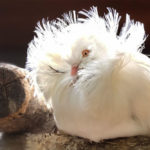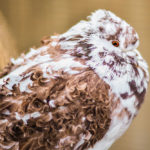It might surprise some of you, that there are lots of different breeds of pigeons. In this article we will be looking at the Ice Pigeon.
This might be a pigeon you don’t know much about and want to learn more. This is the article that will tell you everything about this special breed of pigeon.
The Ice Pigeon: Origins
The Ice Pigeon is a special breed of domestic fancy pigeon that was first classified in the 19th Century. This is one of the oldest colored German pigeons.
In Polish this breed of pigeon is known as Lazurek. While in German this breed of pigeon is known as Eistaube.
This special breed of pigeon was developed over several years of selective breeding.
Other varieties of domesticated pigeons, which includes the Ice Pigeon are all descended from the wild or feral rock pigeons.
The Ice Pigeon is believed to be a descendant of wild pigeons from Southern Germany.
It was first developed in Saxony and Silesia, however development happened between Eastern Germany to Western Poland.
In 1856, Charles Darwin is known to have cross bred the Ice Pigeon.
His experiment was to find out what would happen and what color patterns would be produced.
Now there are many variants of this bird, with different pattern colors thanks to these experiments, that are still seen today.
The Ice Pigeon: Appearance
There are a few varieties of the Ice Pigeon, hence their appearance can change depending on the variety. The Ice Pigeon is an average sized bird that is known for its ice blue or greyish blue coloring.
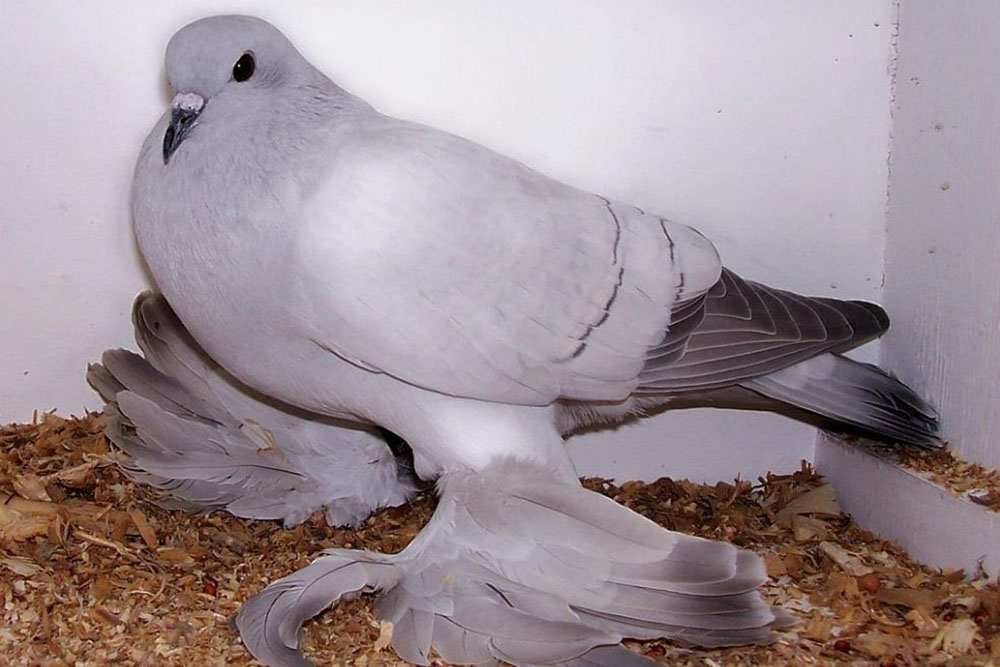
Some Ice Pigeons have feathered feet, while others don’t.
These birds are known for having feather powder, which is a powdery substance that is used to clean and waterproof their feathers, but also keeps away parasites.
The Ice Pigeon has a smooth, slightly round head. Their neck isn’t too long, but slightly forward stretched.
They have a slender beak, which is normally quite dark in color. These pigeons have a very broad chest that, like their neck, is slightly forward stretched.
These birds have long wings and the pattern of their wings depends on the variety.
There may be dark colors that run in lines or patches on their wings and tail. The wing patterned varieties of an Ice Pigeon are as follows:
- Hollow – These wings are very simple. There is no pattern on these wings, it is just a block color.
- White-binding – These wings have two narrow white bandages, which are blackened at the ends. These bandages are parallel with one another.
- Black-binding – These wings are similar to white-binding wings. With these wings there are two narrow black bands, which are also parallel to one another.
- White-scooped – These wings have more of a pattern. They have a triangular shaped white and black scale line that alternates with triangles of the base color of that pigeon.
- Hammered – Similar to white-scooped wings, hammered wings have triangular and black hammering that alternates with triangles of the base color of the pigeon.
- Porcelain colored – Probably the most different, these wings have a delicate pink tone.
Not only can their feather and wing colors change depending on the variant of Ice Pigeon, but the eye color of the pigeon is affected too.
Most varitients have black eyes. Although some variants are known to have yellow to orange colored eyes.
The Ice Pigeon: Characteristics
Ice Pigeons are quite good flyers. If you let them be exposed and normalised to a normal busy life, they should become calm and gentle in nature.
These are naturally a very calm and gentle breed of bird, as long as they are used to people.
This makes them a great pet, but also they are good for exhibitions and ornamental purposes.
As long as you don’t keep them locked away all the time, they won’t become aggressive or skittish. If you do use the Ice Pigeon for ornamental purposes, then you need to make sure to keep them in clean conditions.
However, overall these aren’t very high maintenance birds at all.
It has to be said that this species of pigeon isn’t ideal for your first pigeon experience. You do need a little bit of pigeon care and handling before you try your luck with Ice Pigeons.
The Ice Pigeon: Breeding Guide
Breeding these pigeons is no different than breeding any other type of pigeon. You need to make sure that your bedding is comfortable for the birds.
Thus it shouldn’t be too old, tough or rough. Otherwise, when the babies hatch they will feel really uncomfortable.
Ice Pigeons can deal with slightly harsher and colder temperatures than other breeds. However, these birds don’t do well in extremely cold environments.
So, it is a good idea to keep your breeding area warm or at a decent temperature. Otherwise your birds and their offspring will suffer if it gets too cold.
Some experts have said that in colder conditions and climate, using twigs, grass, pine needles, wood chippings and hay can help with the temperature.
All of these things can make your nests warmer and keep the heat in for longer.
If you are breeding more than one pair of Ice Pigeons, it may be worth having multiple nests. This is so that each pairing has a choice of location, so they can choose the one that they’d prefer.
If you have bred any variety of pigeon before, then you can just use what you used last time.
Final Thoughts
Ice Pigeons are a beautiful type of pigeon. They are commonly found in Germany and like any animal there are a wide variety of this species of pigeon.
All Ice Pigeons have a blue colored hint to their feathers, which is what gives them their name. These are very gentle birds that are suited for being pets or used in exhibits or ornamental.
When it comes to breeding, these birds are very simple, as they can be bred like any other species of pigeon.
Ice Pigeons are a very common type and thanks to Charles Dawin a very popular breed to own.


